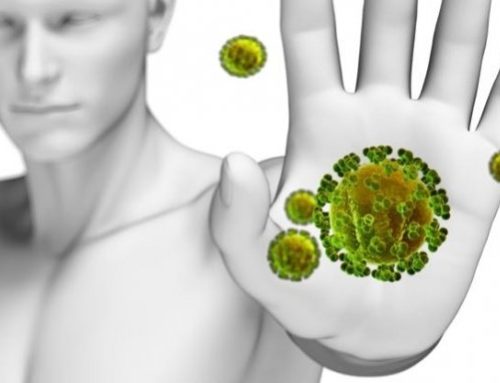ANGELA HENDERSON
Sun-worship has been a feature of the human psyche for as long as history remembers, and not surprisingly, since sunlight is one of the fundamental ingredients for life on earth, as we all know. We also know that getting out in the sunshine just makes us feel so darn good! But just how important the effects of the sun are at the human cellular level — in particular its role in vitamin D production in the skin — is perhaps not quite so well known outside of academia and the healthcare system.
It deserves to be.
In fact, the vitamin D story is SO BIG, that a study conducted by a team of scientists at Harvard, Oxford and other major universities and published in the British Medical Journal in 2014 found that roughly 13% of all deaths in the United States could be attributed to low vitamin D levels. Adults with lower levels of the vitamin in their systems were found to have a 35% increased risk of death from heart disease, 14% greater likelihood of death from cancer, and a greater mortality risk overall. In analyzing the studies, middle-aged and older adults who took D3 had an 11% reduction in mortality from all causes compared to adults who did not. The benefits were found only with D3, and they found no benefit in people taking the D2 form of the vitamin.
This study was just the tip of the iceberg of research on vitamin D and disease. There are countless others. A study published in the Archives of Internal Medicine in June 2008, for instance, found that there was double the risk of death overall and from cardiovascular causes among women and men (average age 62) with low blood levels of vitamin D who had been referred to a cardiac center for coronary angiography. In May 2008, research in Canada found that vitamin D deficiency was associated with poorer breast cancer outcomes.*
Deficiency in the nutrient is implicated in:
- Heart disease
- Stroke
- Arthritis
- Infectious diseases
- Diabetes
- Respiratory disorders
- Psoriasis
- Multiple sclerosis
- Osteoporosis
- Cancers
- Fibromyalgia
- Flu
- Depression
- Obesity
- and more…
Fortunately for doctors, and for us, vitamin D is one of those nutrients for which a blood test can give a useful indication of the level in our body (which is not the case for all vitamins or minerals). This means that doctors can easily identify a deficiency and prescribe vitamin D based on your actual status. Which they regularly do.
What doctors don’t tend to do, however, is recommend that nutrients are taken not individually but as part of a broad-base “health insurance” approach — which means nourishing the body with ALL of its required nutrients. The reasons for doing this are a future blog post in itself, but one look at the diagram below will tell you that there is more to our cells than meets the eye, and we can’t just assume that plugging in one nutrient will fix such a ridiculously complex system if it’s functioning under par.

But, back to our prime suspect. Or perhaps we should say “undercover agent”, as this so-called “vitamin” is actually a hormone. It operates under various aliases: calcitriol (or 1,25-dihydroxyvitamin D); ergocalciferol (vitamin D2); cholecalciferol (vitamin D3); calcidiol (25-hydroxyvitamin D). Its undercover ops include
- Increasing absorption of calcium in the gut
- Retaining normal cellular health and function
- Supporting bone and tooth mineralisation and growth
- Supporting muscle strength and coordination
- Assisting robust and balanced immune function
By all accounts though, our special agent hero is hard to pin down. Studies show that around 50% of the earth’s population is deficient in vitamin D, and in the UK, around one quarter of the population doesn’t get enough of even the RDI (more on that later). In the US, it’s an astounding two-thirds of the population. The reasons for this centre around how much sunshine we’re exposed to. Those of us living above the 37th parallel (see image below) are much more likely to be deficient in vitamin D, as our skin cannot produce enough of it except in the summer months. And people with dark skin living in those latitudes are at even greater risk, as skin pigment is an effective protection against UV rays but also reduces vitamin D synthesis. Some research suggests that those with dark skin may need up to ten times the amount of sun exposure than light-skinned individuals in order to make comparable amounts of vitamin D.
BMI (Body Mass Index) is also a factor in vitamin D levels. Those who are overweight or obese are more likely to have lower vitamin D levels in their blood: the bioavailability of vitamin D3 has been found in studies to be significantly lower for those who are overweight because of the nutrient’s deposition in fat cells.

But how much of the sunshine vitamin do we actually need? The RDI (Recommended Daily Intake) varies from country to country. In the UK, the current guideline is 10 micrograms per day (400 IU), but this is well below the therapeutic doses recommended by experts such as Dr Michael Holick — a leading authority on vitamin D:
“I recommend to all of my patients that they should take 2000-3000 IU of vitamin D a day from dietary sources, sensible sun exposure and supplements. I believe that it is important for women to take at least 2000 IU of vitamin D a day. Although many of the studies are association studies there continues to be strong evidence that increasing vitamin D intake has other health benefits besides those for bone health. From my perspective there is no downside to increasing your vitamin D intake to levels I have recommended in The Vitamin D Solution which is 1000 IU of vitamin D a day for children and 2000-3000 IU of vitamin D for adults.”
Holick, M.F. Vitamin D Deficiency. New Engl. J. Med. 2007. 357:266-81.
I mentioned above that it’s important to take a holistic approach with vitamins and minerals as there are essential synergies at work with nutrients. One such relationship is vitamin D with vitamin K2. K2 is not one of the high-profile sexy, catwalk nutrients — research into its role and benefits is fairly recent and most supplement manufacturers haven’t caught on to it yet, but it’s been found to play a vital part in bone formation and arterial health. The link? Calcium metabolism.
The multi-vitamin and mineral supplement I take every day has 2,000 IU of vitamin D plus vitamin K2, along with optimum amounts of all the other essential nutrients when taken at the full dose. I wouldn’t be without it.
Contact us here if you would like more information on anything in this article. We’re always happy to help.
REFERENCES
https://www.health.harvard.edu/staying-healthy/time-for-more-vitamin-d
https://askthescientists.com/qa/vitamind/#toggle-id-5?id=11345391
https://academic.oup.com/jn/article/136/4/1126/4664238
https://www.patrickholford.com/advice/vitamin-d-you-are-almost-certainly-not-getting-enough
https://academic.oup.com/ajcn/article/72/3/690/4729361





Leave A Comment